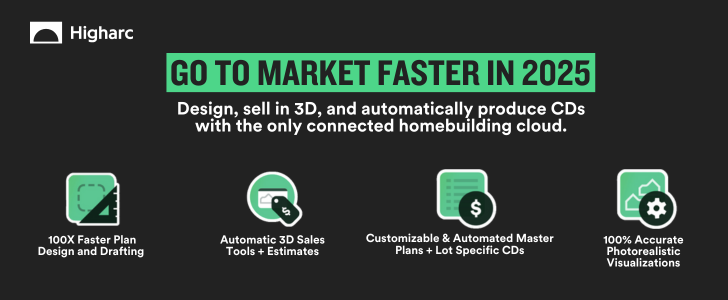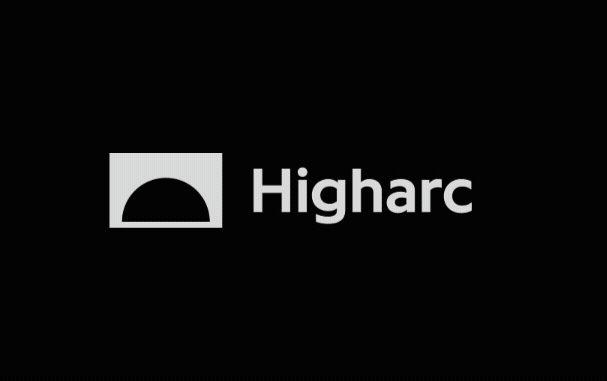Architecture
Build Faster or Fall Behind: How Velocity May Decide Builders’ Fates In 2025
This AI-powered technology helps builders cut weeks from design and construction timelines. This analysis explores why higher-velocity processes are no longer optional — and how builders can keep up and outpace competitors.

Homebuilders in 2025 face a business context full of challenges, equal in measure to their opportunity for big-time growth.
Rising mortgage rates, unpredictable material costs, stricter lending conditions, and surging insurance premiums reshape how builders operate. At the same time, millions of Millennials and Gen Z adults are forming households and seeking homes, creating strong demand. Yet the supply of new homes remains tight. Builders face a key question: How can they deliver homes faster and more efficiently while maintaining quality and profitability?
Today’s evolving business models add another layer of complexity. More homebuilders are shifting toward an "asset-light" or "land-light" strategy, where instead of holding large land inventories, they acquire lots on an as-needed basis. This approach aims to reduce financial risk and improve capital efficiency. However, it requires builders to be both strategically precise in land acquisition and operationally excellent in every phase of the building cycle — from design and permitting to construction and customer delivery.
Velocity —measured in how quickly a home can go from concept to completion and record a building lot inventory "turn" — is becoming the critical factor separating successful builders from those struggling to keep up.

What’s Slowing Builders Down?
Builders are being squeezed from both ends. Costs are up, thanks to higher interest rates, labor shortages, and global supply disruptions. New tariffs on building materials from Canada, China, and Mexico are adding an estimated $17,000 to $22,000 to the average new-home price, according to CoreLogic. Insurance rates, particularly in areas prone to floods, wildfires, and hurricanes, are soaring—or disappearing altogether.
On the demand side, buyers remain active but cautious. Higher monthly payments have stretched affordability, and many potential buyers are waiting for prices—or mortgage rates—to drop. Meanwhile, stricter lending standards make it tougher for private builders to finance projects, especially those relying on smaller regional banks. Public builders and firms backed by foreign investors often have easier access to capital, giving them a competitive edge.
Why Velocity Is A New-Normal Non-Negotiable
Getting homes to market faster isn’t just about beating competitors—it’s about survival. Long design cycles, manual updates to construction documents, and delays in permitting and procurement can cost builders sales and eat into already-thin margins. Homebuyers expect quicker turnarounds, and waiting months to finalize designs or secure approvals is no longer acceptable.
Marc Minor, CEO and Co-Founder of Higharc, puts it simply:
Builders spend weeks — sometimes months — updating outdated design files just to get basic information for sales and construction. Our goal is to eliminate that unnecessary delay."
Technology’s Role Powers Forward The Process
Higharc, a technology company focused on homebuilding, recently introduced Higharc AI, a tool designed to significantly reduce design and planning times. Using machine learning, it can convert sketches or floor plans into interactive 3D models within minutes. These models automatically generate construction documents, pricing estimates, and customer-facing brochures.
Ryan Young, Director of Architecture at Highland Homes, shared how this technology is changing their process:
Partnering with Higharc has the potential to transform our operations by integrating advanced technology into the homebuilding process. With Higharc's AI, we could strategically respond faster to market demands and deliver visually engaging designs for our buyers with unmatched speed. This collaboration could be a win-win for both our team and our customers."
For builders, the advantage isn’t just speed. Faster designs mean quicker permitting, more efficient procurement, and less back-and-forth during construction – an end-to-end building lifecycle acceleration. As a result, projects move forward with fewer surprises and less rework.

Practical Ways Builders Can Build Faster and Smarter
- Accelerate the Design Phase:
Traditional design processes are slow. Tools like Higharc AI allow builders to quickly adapt plans to meet buyer preferences or lot conditions, slashing weeks off timelines. - Improve Procurement and Estimating:
Delays often stem from slow cost estimation and supply coordination. Higharc’s integrated system connects design changes directly to material takeoffs and vendor orders, reducing mistakes and miscommunications. - Enhance the Buyer Experience:
Buyers want clarity. Providing visual models of their future homes, along with real-time pricing and options, helps close deals faster and reduces decision paralysis. - Shift to On-Demand Land Use:
Many builders are moving away from speculative land buying toward just-in-time lot acquisition. This approach requires nimble operations and tight coordination between design, sales, and construction teams.
What’s at Stake?
Builders who adapt to these faster, more integrated processes stand to gain market share, even in a challenging economic climate. Those who stick with slower, manual methods risk losing customers to competitors who can deliver homes more quickly and reliably.
Minor sums it up:
If you're a modern home builder, it's becoming non-negotiable to have some digital capability—not just on the sales and marketing front, but in terms of how you manage your vendors and your product."
Bottom Line
Speed doesn’t mean cutting corners—it means eliminating inefficiencies and aligning every part of the process. In 2025, the difference between thriving and struggling will come down to how quickly builders can turn buyer demand into completed homes. Technology like Higharc AI is making that shift possible. The question is: How soon will the industry catch up?
MORE IN Architecture
Florida Condo Project Sets Resilience Benchmark Early
Contributing writer Richard Lawson explores the challenges – and an urgent lane of future-proof opportunity for residential developers – in an exclusive interview with John Farina, president of U.S. Development.
Wellness Is the New 'Why' In Neighborhood Development
Health and well-being are no longer add-ons—they’re the foundation of value, purpose, and performance in new communities. From brain-friendly design to AI-native living, five big trends are redefining what home means now.
AI Crushes Missing-Middle Time And Cost Curves Toward Affordability
Developing multifamily rental and for-sale properties takes time — sometimes years -- depending on a labyrinth of zoning rules and the whims of local jurisdictions.


